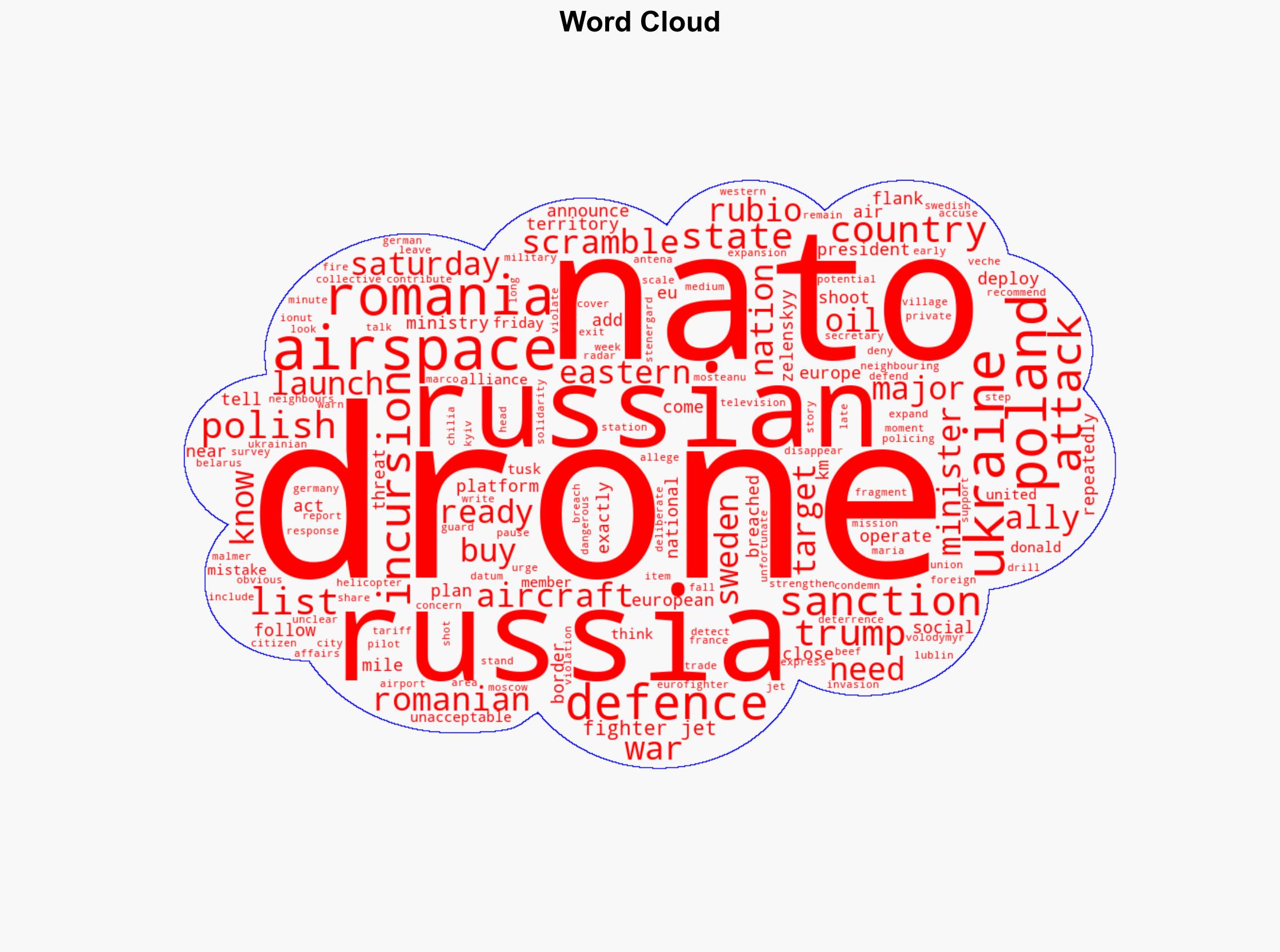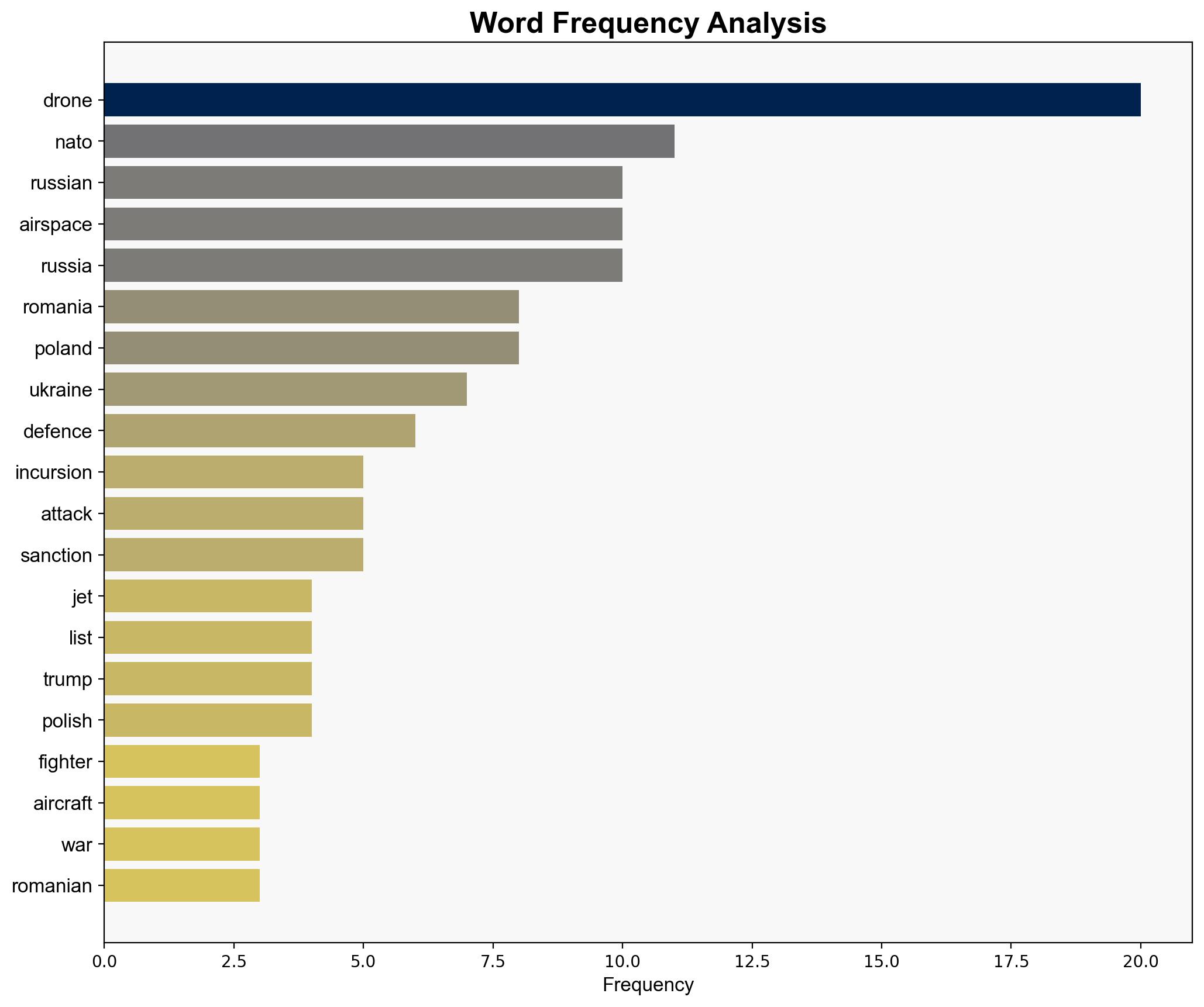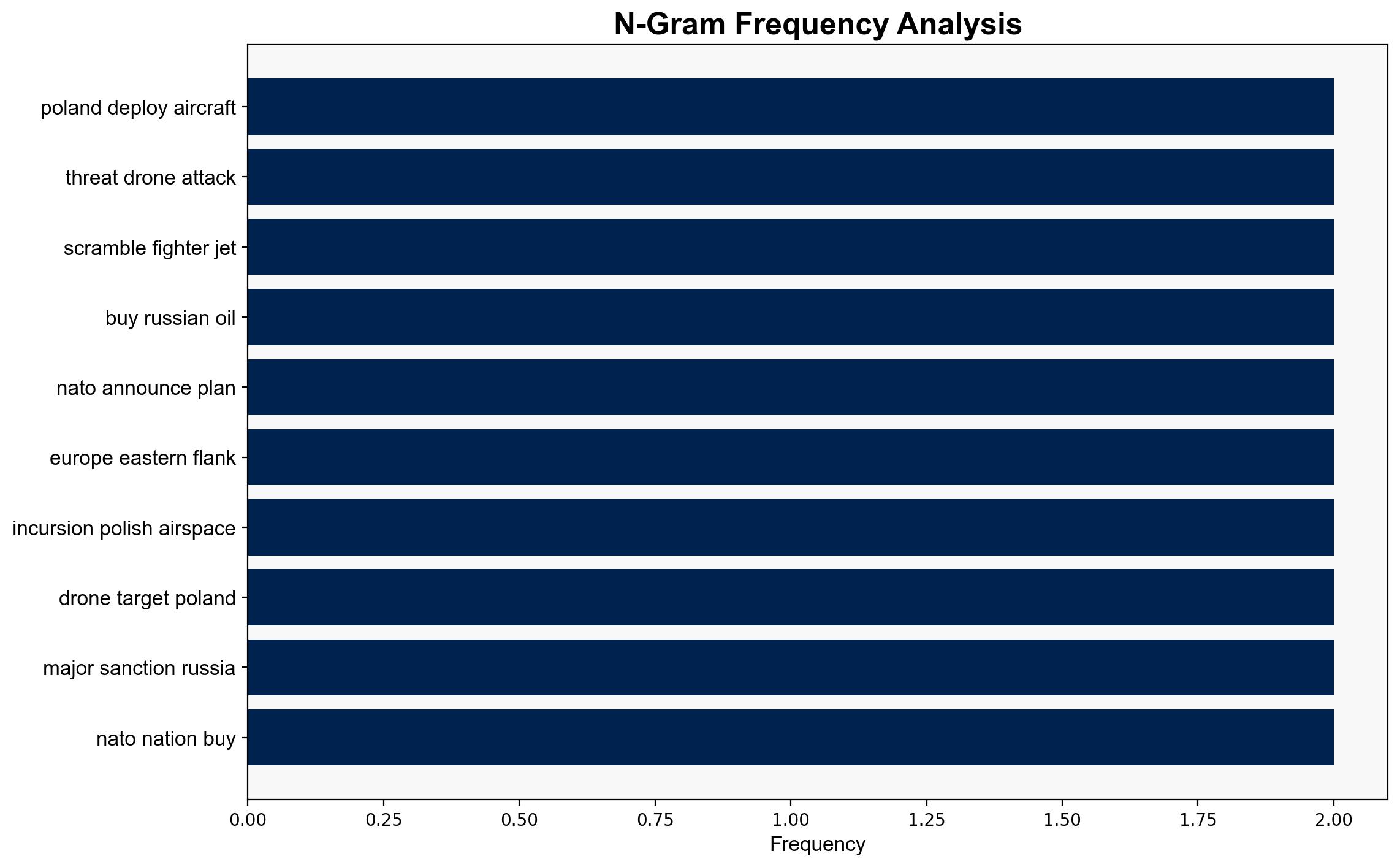Romania reports drone incursion during Russian attack on Ukraine – Al Jazeera English
Published on: 2025-09-14
Intelligence Report: Romania reports drone incursion during Russian attack on Ukraine – Al Jazeera English
1. BLUF (Bottom Line Up Front)
The most supported hypothesis is that the drone incursion into Romanian airspace was an unintended consequence of Russian military operations in Ukraine, with a moderate confidence level. The recommended action is to enhance regional air defense coordination and intelligence-sharing among NATO allies to prevent future airspace violations and mitigate potential escalations.
2. Competing Hypotheses
1. **Unintended Incursion Hypothesis**: The drone incursion into Romanian airspace was accidental, resulting from Russian military operations targeting Ukraine. This hypothesis suggests operational miscalculations or technical malfunctions led to the breach.
2. **Deliberate Provocation Hypothesis**: The incursion was a deliberate act by Russia to test NATO’s response and create strategic ambiguity, potentially as a prelude to broader regional destabilization efforts.
Using the Analysis of Competing Hypotheses (ACH) 2.0, the Unintended Incursion Hypothesis is better supported due to the lack of direct evidence indicating intentional targeting of Romania and the historical context of similar incidents during military operations.
3. Key Assumptions and Red Flags
– **Assumptions**:
– The Russian military has full control over its drone operations.
– Romania’s airspace monitoring systems are fully operational and accurate.
– **Red Flags**:
– Inconsistent reports on whether the drone was armed or unarmed.
– Lack of clear communication from Russia regarding the incident.
– Potential bias in interpreting Russian intentions as inherently aggressive.
– **Blind Spots**:
– Limited information on the drone’s origin and control mechanisms.
– Insufficient data on the frequency and nature of similar past incidents.
4. Implications and Strategic Risks
– **Geopolitical Risks**: Increased tensions between NATO and Russia, potentially leading to heightened military readiness and further incidents.
– **Economic Risks**: Potential impact on regional trade and investment due to perceived instability.
– **Cyber Risks**: Possibility of cyber operations accompanying physical provocations.
– **Psychological Risks**: Heightened public fear and uncertainty, influencing political and military decision-making.
Escalation scenarios include accidental military engagements or misinterpretations leading to broader conflicts.
5. Recommendations and Outlook
- Enhance NATO’s regional air defense systems and establish rapid response protocols for airspace violations.
- Increase intelligence-sharing among NATO members to improve situational awareness and threat assessment capabilities.
- Engage in diplomatic dialogue with Russia to clarify intentions and reduce the risk of miscalculations.
- Scenario Projections:
– **Best Case**: Strengthened NATO cohesion and deterrence capabilities prevent future incidents.
– **Worst Case**: Misinterpretations lead to military confrontations and regional instability.
– **Most Likely**: Continued low-level provocations with diplomatic efforts maintaining overall stability.
6. Key Individuals and Entities
– Ionut Mosteanu
– Volodymyr Zelenskyy
– Maria Malmer Stenergard
– Marco Rubio
– Donald Tusk
– Donald Trump
7. Thematic Tags
national security threats, cybersecurity, counter-terrorism, regional focus




